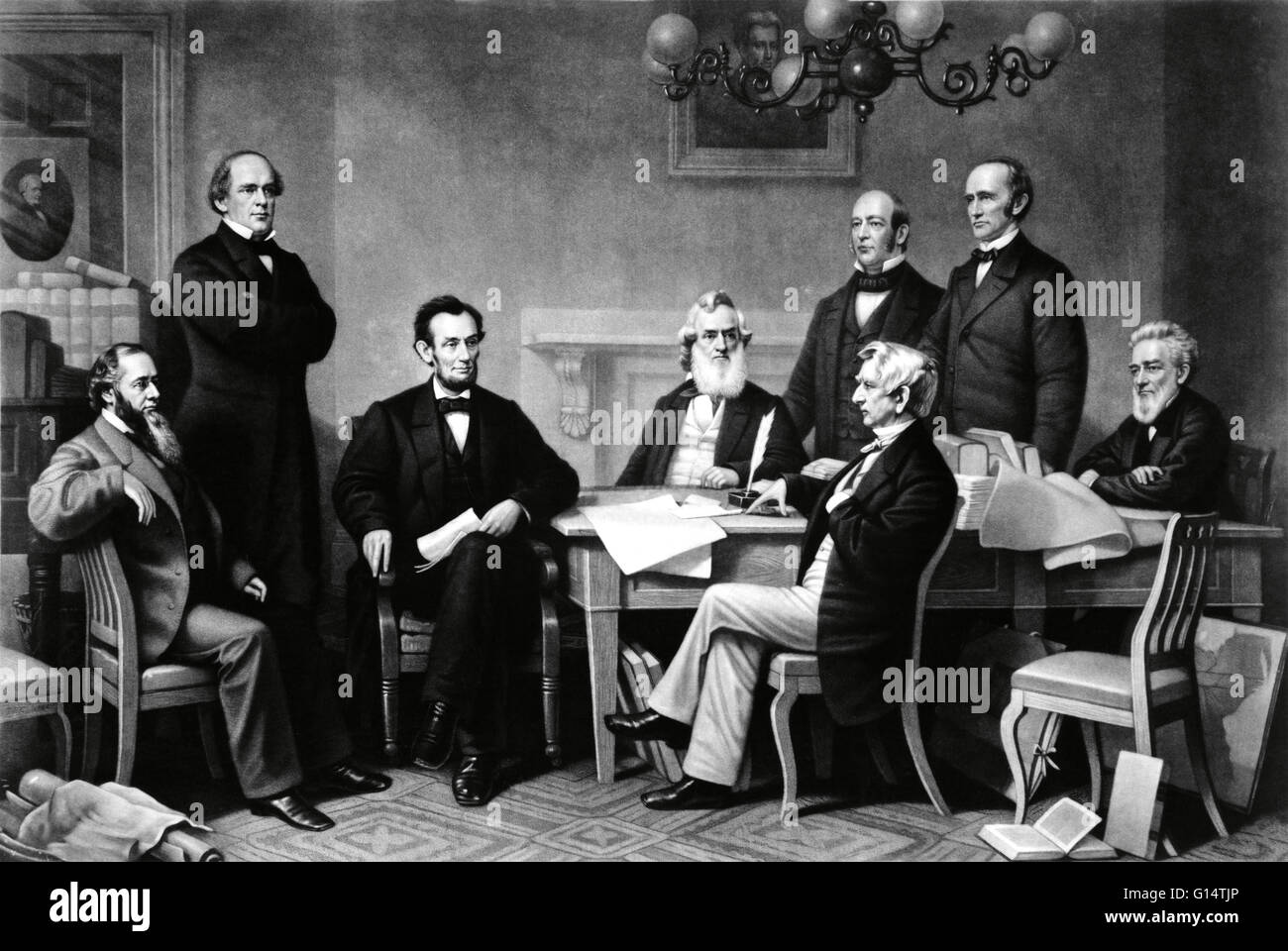The first reading of the Emancipation Proclamation before the cabinet. Engraving by Alexander Hay Ritchie, 1866. Abraham Lincoln (1809-1865) was the 16th President of the United States, from March 1861 until his assassination in 1865. He led his country t

Image details
Contributor:
Science History Images / Alamy Stock PhotoImage ID:
G14TJPFile size:
47.7 MB (2 MB Compressed download)Releases:
Model - no | Property - noDo I need a release?Dimensions:
4990 x 3341 px | 42.2 x 28.3 cm | 16.6 x 11.1 inches | 300dpiPhotographer:
Photo ResearchersMore information:
This image could have imperfections as it’s either historical or reportage.
The first reading of the Emancipation Proclamation before the cabinet. Engraving by Alexander Hay Ritchie, 1866. Abraham Lincoln (1809-1865) was the 16th President of the United States, from March 1861 until his assassination in 1865. He led his country through the American Civil War, preserving the Union, while ending slavery, and promoting economic and financial modernization. Reared in a poor family on the western frontier, Lincoln was mostly self-educated. He became a country lawyer, an Illinois state legislator and member of the United States House of Representatives. Lincoln secured the Republican nomination and was elected president in 1860. Before Lincoln took office in March, seven southern slave states declared their secession and formed the Confederacy. When war began Lincoln concentrated on both the military and political dimensions of the war effort, seeking to reunify the nation. He vigorously exercised unprecedented war powers, including the arrest and detention without trial of thousands of suspected secessionists. He prevented British recognition of the Confederacy by skillfully handling the Trent affair late in 1861. He issued his Emancipation Proclamation in 1863 and promoted the passage of the Thirteenth Amendment to the United States Constitution, abolishing slavery. The Gettysburg Address was delivered at the dedication of the Soldiers' National Cemetery in Gettysburg, Pennsylvania, on the afternoon of Thursday, November 19, 1863. Lincoln married Mary Todd in 1842 they had four sons, but only one survived to adulthood. Lincoln was assassinated by John Wilkes Booth at the Ford Theater on April 14th, 1865. After being in a coma for nine hours, Lincoln died at 7:22 am on April 15. Currency honoring the president includes the United States' five-dollar bill and the Lincoln cent, which represents the first regularly circulating U.S. coin to feature an actual person's image.